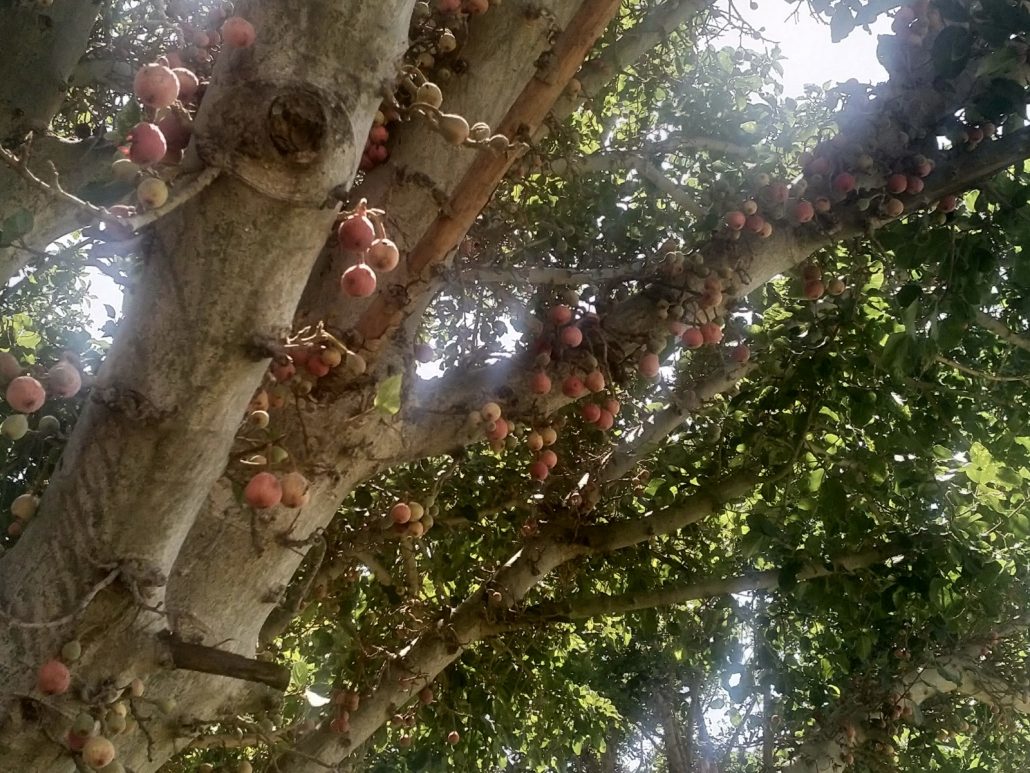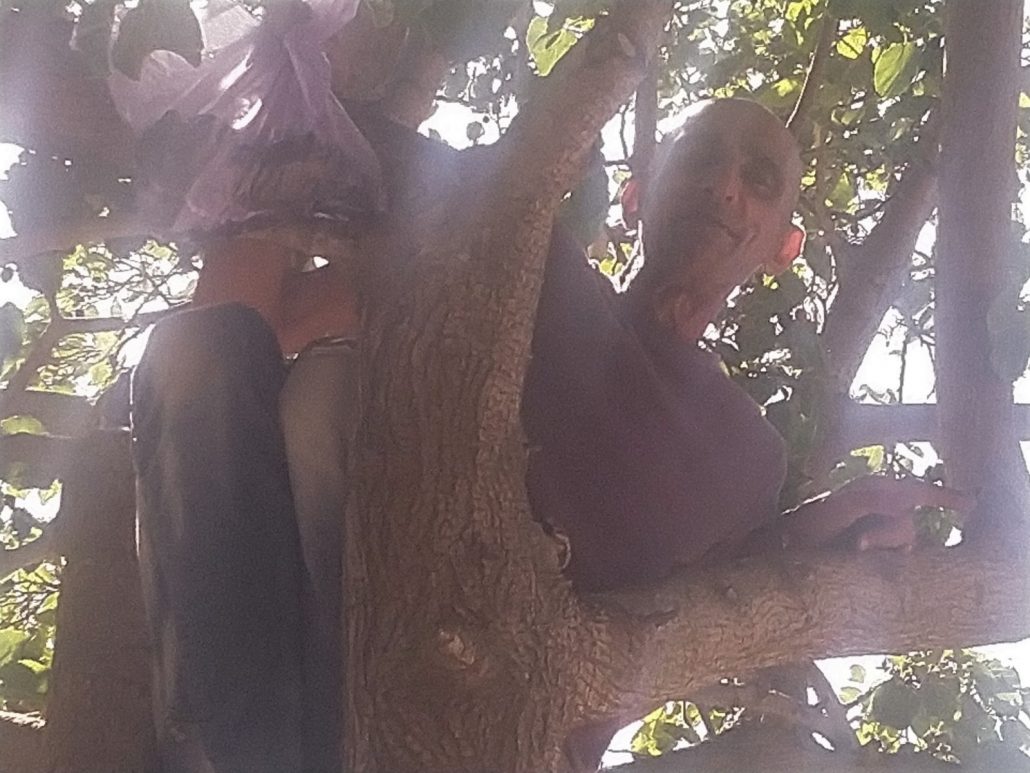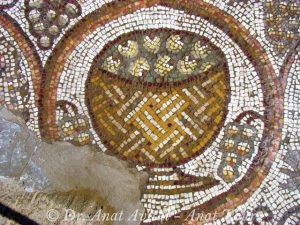Justice and the Time of Sycomores
Justice and the Time of Sycomores
Between the waves a few weeks ago, Arik and I braved the outside world and took a stroll along the Lachish Stream Park in Ashdod. Sycomore trees along the path were bursting with fruit, and so Amos the prophet came to us. It was the same day I cried so hard over events in my homeland(s) that I broke a blood vessel in my eye.

Yes, it really is sycomore with an “o, ” and it’s not the same as sycamore with an a, which goes by the Latin name of Platanus occidentalis, a classic North American species. The syc-O-more is the one in the Bible – ficus sycomorus, which is where this tree gets its common name, mentioned in the New Testament, sycomore fig.
As we walked in the shade along the stream, I heard a man shout out a hearty “shalom” from somewhere above. I looked up and thought I saw the reincarnation of Amos – the shepherd-prophet who cultivated sycomore figs (Amos 7:14). Indeed, a man was perched high in the branches. But he wasn’t harvesting sycomore figs – because the tree was a white mulberry, whose leaves and spreading crown I mistook at first glance to be those of a sycomore. He already had a bag full of the syrupy mulberries, which he said he was going to go home and refrigerate for a late night snack. I asked him if he would let me take his picture. “For the government?” he asked. I was nonplussed for a moment, but reassured him it was merely because he reminded me of the prophet Amos, and he acquiesced.
What in the world is a “dresser”?
Amos 7:14 is the only place in the Bible where you’ll find the Hebrew words for what Amos did for a living – boless shikmim. In that same verse, Amos admitted he not been a professional prophet before; and no wonder, going on and on about injustice like he did and living at a time when leaders expected their prophets to be yes-men. The word boless has been translated as “gatherer,” “caretaker,” or, more famously, “dresser.” But many scholars seem to go with the way word is translated from the Greek in the Septuigint – “piercer.”

Botanist Noga Hareuveni explained that piercing the fruit and then rubbing it with oil ripened it, and it’s also said that the piercing emits ethylene gas, which speeds up ripening. Without human help, the piercing is helped along naturally by certain species of wasps. According to Hareuveni, sycomore-piercing was a summer job for shepherds. When springs in the mountains ran dry, so did income. Shepherds would bring their sheep and goats down to the valleys where the labor-intensive gig of piercing the sycomore fruit was just about the only work available. High in the branches, they could pierce the fruit while still keeping an eye on their flocks below, grazing in the abundant shade and quenching their thirst in still-flowing lowland springs.
Infuriating injustice
Reuveni imagined Amos, from Tekoa in the Mountains of Judah, perched in a sycomore tree in the oasis of Jericho together with shepherds from Bethel. He pictured Amos listening to them describe the hardships of the poor, the sick and the hungry, the injustices and humiliations of their lives in the most unforgiving season of the year. His anger kindled, Amos went up to Bethel to berate its rulers. Their response: Go sell your prophecies somewhere else, man; leave us alone. Fearless, as we know, he did not.

sixth-century Beit Loya church, in the Judean Lowlands
southeast of Beit Govrin,
Israel. Wikimedia Commons.
A sycomore tree is also mentioned in Luke 19:1–10. The background to that story is, as with Amos, Jericho. It’s about a vertically challenged, wealthy government official named Zachaeus, who climbed a sycomore to catch a glimpse of Jesus. Zachaeus had the most hated job of the day: tax collector, and ordinary people tried to keep their social distance from his ilk. But of all things, Jesus invited him to lunch. To catch the symbolism of Zachaeus’ actions and the subsequent lunch invitation, you have to know the tree’s name in Hebrew: shikma (plural: shikmim). It comes from the Hebrew root meaning “regrowth.” That’s because the sycomore is known for its persistence in sprouting again even when cut to a seemingly lifeless stump. And the modern Hebrew word for rehabilitation, shikum, comes from the same root! Regrowth and reinvention in the face of unremitting adversity is something a lot of us have been learning plenty about these days, and it seems that Amos knew why.

Civil Rights Memorial, Montgomery, Alabama. Wikipedia.

Want to learn more?
Galil, J. An Ancient Technique for Ripening Sycomore Fruit in East-Mediterranean Countries. https://www.hort.purdue.edu/newcrop/Hort_306/reading/Reading%2010-2.pdf.
Hareuveni, N. 1984. Trees and Shrubs in our Biblical Heritage. Pp. 89-92. Kiryat Ono.
“An Ancient Technique for Ripening Sycomore Fruit in E. Med Countries. https://www.hort.purdue.edu/newcrop/Hort_306/reading/Reading%2010-2.pdf


